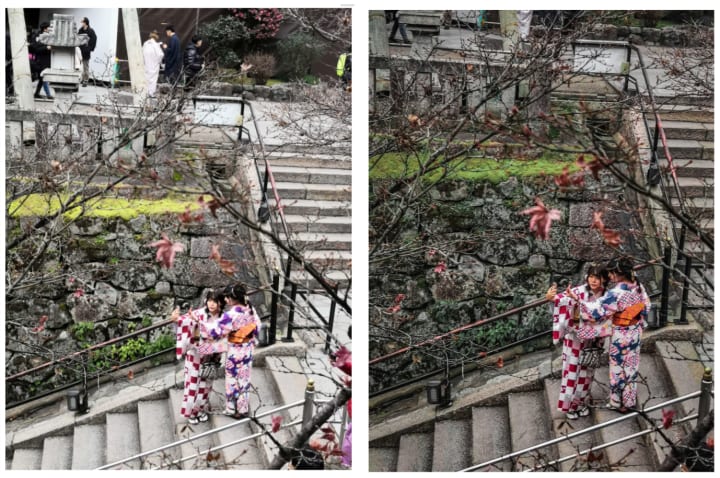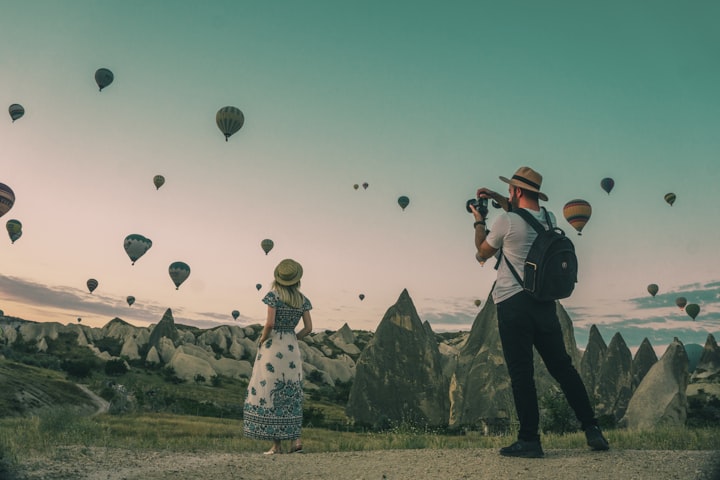Capturing A Moment - The Power And The Peril Of Mobile Phone Photography
Snap to your heart's content, but don't forget to be present in the moment.

I started taking photographs to help me remember moments and to share them with people who weren't there to experience something with me. This, along with my fear of forgetting, drove me to visually document my everyday life as well as my epic adventures.
Taking photos is incredibly rewarding. As a photographer, you have the ability to gift a memory, a tangible and visible moment, frozen in time, that your subjects can always look back on. A photograph can trigger a much more vivid experience of a memory, and if you don't have the best memory in the world, it's an ideal way to keep track of where you've been and who you were.
You're always carrying a camera
Check your pocket or immediate surroundings, I'll bet your phone is within arms reach. We take these pocket-sized computers with us everywhere - I can't remember the last time I left home without it. This also means that there's always a camera within arms reach too. The cameras inside our mobile phones are so powerful, that sometimes I prefer to shoot with my phone because the photo quality can be as good as, if not better than, my DSLR camera.
"The best camera you own is the one you always have with you"
I'm a firm believer in this phrase. Carrying a big bulky camera is heavy to lug around and takes up valuable space in your backpack, as well as being very expensive. Smartphone cameras are more accessible to people, while also being able to sneak their way into precious moments without being as obtrusive as a chunky professional camera, which in my experience distracts your subject and often makes them nervous or awkward.
The problem with mobile phone photography
The problem with constantly photographing and videoing on our smartphones is that we live our lives through our screens. I've encountered hundreds of people at concerts, filming the whole thing on their phones and watching through the tiny screen. In my mind, they may as well have stayed home and watched it on the television.
Fixating on getting the photograph, the one which presents your ‘best self’ for sharing on social media, can detract from the experience that you have in that precious moment. Imagine this: you arrive at an incredible mountain viewpoint, straight away you pull out your phone and ask someone to take some photos of you. You strike your poses and photos are snapped, you scroll through them, take a few more images, then head straight back down the mountain, editing and posting the image to Instagram. Did you take the time to look up and look around? Were you present in that place at that moment, or did you watch the whole thing through a screen?
There is nothing wrong with taking photos, I actually think it's a great thing! It's a form of self preservation and will bring about intense memories when you look back at the image in years to come. The problem is spending all your time taking photos, and not allowing yourself the time to be present and really live in that moment.
If we spend the whole time taking photographs, we won't have a rich bank of memories to draw from when we go back and look at a photograph - all we'll have is the memory of taking the photo.
The power of mobile phone photography
For me, it's all about boundaries. I like to arrive at a beautiful spot, drink in the views and absorb the vibe of my surroundings in all it's four dimensionality. The temperature, weather, sounds, smells, taste, and the conversations with the people sharing that experience with me. The photograph that I will inevitably take (I'll be honest, I’m always the first to get my camera out, I am, after all, a snap-happy photographer), should trigger the full experience I had at that moment.
Having a paper-thin camera that slips in and out of my pocket has allowed me to sneak stealthy photographs of people in art galleries and busy marketplaces. The ease and accessibility of mobile phones facilitate spontaneous photographs, like when the light was ‘just right’, or a precious and intimate moment that needs to be captured immediately.
Philosophical rant over: here’s one of my favourite images taken on my smartphone
The photo that I'm about to share with you is one of my favourites from last winter's trip to Japan, proving that you don't need a fancy camera to take high quality and memorable photographs that capture a moment that you don't want to forget.

This photo shows two young women dressed in colourful kimono, taking selfies on the stone stairs which lead up to the Kiyomizu-dera temple in Kyoto, one of the most famous in all of Japan.
For me, this image captures multiple facets of the smartphone revolution. I am standing taking a photo of these women with my smartphone, who are in turn taking a photo of themselves using their smartphones. It's a smartphone inception. The accessibility and universality of these devices mean that we can all share a similar experience of photography and the capturing and sharing of memories.
Let's get technical
I shot this image in RAW format, at the highest resolution available on my phone (24MP). Once I had found an interesting subject, I moved around and kept snapping images until I was happy with the composition. Here are some from the reject pile:

We walked around for a few more hours, and then on the train back to the hotel I decided to load up my favourite image into the Adobe Lightroom app. I loved the bright green moss-covered walls, and how their brightly coloured kimonos stood out against the grey of the stone steps.
I darkened the blacks to help relay the moody feel of that rainy afternoon, cropped the image so that the women fit in the lower right third of the image, to make sure that they were the focal point. I also made sure that the colours of the leaves, moss and the kimonos really popped by increasing the vibrance.
Bish-bash-bosh and there you go - the side-by-side before and after shot:

There are, of course, limitations to the smartphone camera and the images it can produce, but it is still one of the most powerful tools you have to keep a visual record of your life. It's a simple and accessible process that should connect us to each other, to our environments and to our memories.
How to get more out of your mobile phone images
Here are a few tips to get you started on your mobile phone photography journey:
- Check your resolution settings: on many modern smartphones, you can go into your settings in your camera app and change the resolution that you’re shooting at. Make sure that you’re shooting at the highest resolution possible to get the most out of your images. Some camera apps afford you the luxury of shooting in RAW (minimally processed data from the image sensor of a digital camera) which will allow you to do more with the image during the post production and editing stages.
- Download a camera app: If you're feeling up to the technical challenge, these apps allow you to play with settings such as aperture, shutter speed, ISO, and white balance. If this is all jargon and gibberish to you at present, that's okay!! Thankfully the AI in our phones can do most of the heavy lifting for you.
- Download a mobile editing app: I personally use the Adobe Lightroom Mobile App, though there are excellent free photo editing apps such as Snapseed and VSCO.
- Consider buying an external lens: when I had an iPhone, I bought a fisheye lens that clipped to the top of the camera on my phone. These detachable lenses can massively improve the quality of the images you take, while also allowing you to be more creative in your composition of your mobile phone photography.
I can't wait to see the images you come up with!
Stay present, keep snapping.
B
X
About the Creator
Grumble Bee
Grown in the British Isles, exploring beyond.
Photographer // Journalist // Linguist // Environmentalist






Comments
There are no comments for this story
Be the first to respond and start the conversation.